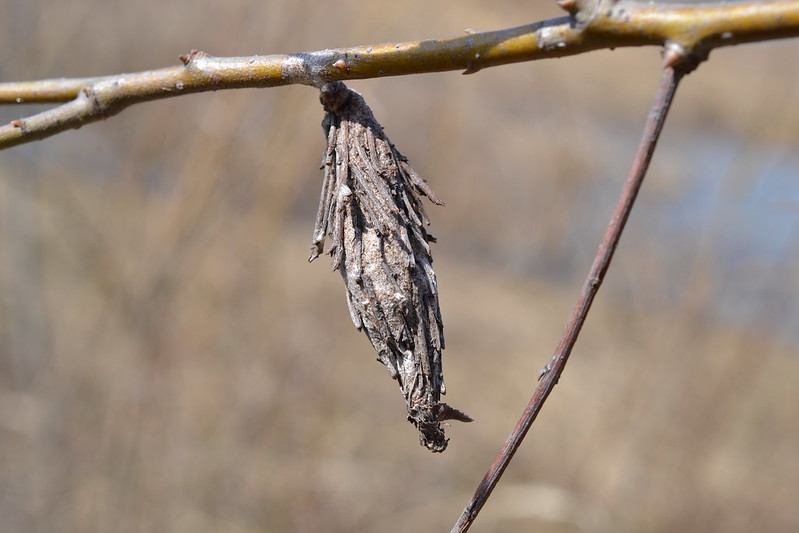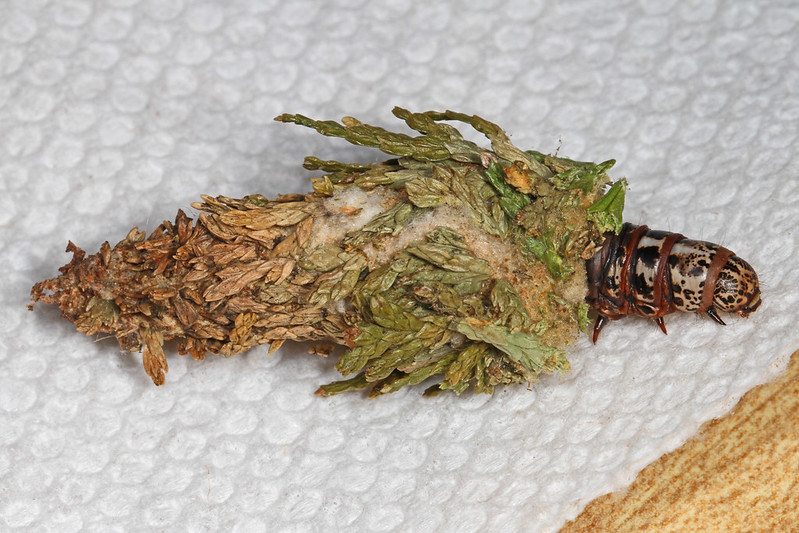If You See These Hanging From Your Tree, You Need To Act Immediately
Evergreen Bagworms can cause major problems, even though their name sounds completely harmless.
These things aren’t worms; they’re the larvae stage of a moth. They are very dangerous to both deciduous and evergreen trees and can even kill them if they aren’t removed.
Evergreen Bagworms are scientifically named Thyridopteryx ephemeraeformis. They get their name from the unique shell they make around themselves, which looks a lot like a bag.
The larvae make these bags by making a thread that looks like silk and using it to tie things to their bodies, like sticks and leaves.
Slowly, this shell gets bigger, giving the worms a place to hide and stay warm.

What is the lifecycle of an Evergreen Bagworm?
The female adult starts having babies when she lays eggs inside her case, which stays on the tree after she dies.
The eggs stay in their shells all winter. In late spring or early summer, they hatch, making small maggots. Following this, the larvae go out to find a good tree to stick to and begin making bags out of their silk-like thread.
Even though they start out small, these bags get bigger over time as the larvae get bigger and come out to get more plant material for their shell. As the maggots move on to the next stage, new bags are made.
In two weeks, the caterpillars come out of their cases as adult moths. The small males fly off to find females to mate with.

Evergreen Bagworm treatment
Even though Evergreen Bagworms look like they won’t hurt trees, they can actually do a lot of damage by eating the leaves and stopping the production of nutrients.
The tree is now weak and more likely to get other diseases, which could kill it in the end.
So, what can you do to protect your trees from Evergreen Bagworms and keep them healthy? You could do a few things, such as:
- Getting rid of the bagworms by hand
- Cutting back the stems that are affected;
- Encourage natural predators like birds and parasitic wasps in your garden;
- Bug killers made just for bagworms can be used to chemically control the issue.
You can also stop Evergreen Bagworm outbreaks by doing things like:
- Checking trees often, especially in the spring and summer when the eggs hatch, to find bagworms early;
- Taking care of trees by trimming them and making sure they get the right nutrients;
- Getting rid of bagworms;
- Keeping trees far enough apart to lower the risk of bagworm infection; and
- Keep an eye on plants and trees nearby, especially since bagworms can move from one tree to another.
What do you think? Evergreen Bagworms aren’t very clear and don’t look like they’re very dangerous, but they can really do a lot of damage.
Know how much damage they can do, and make sure you check on your plants and trees often!
What did you think about this? Did it help you in a way?
Please SHARE this with Family and Friends to make them aware!



